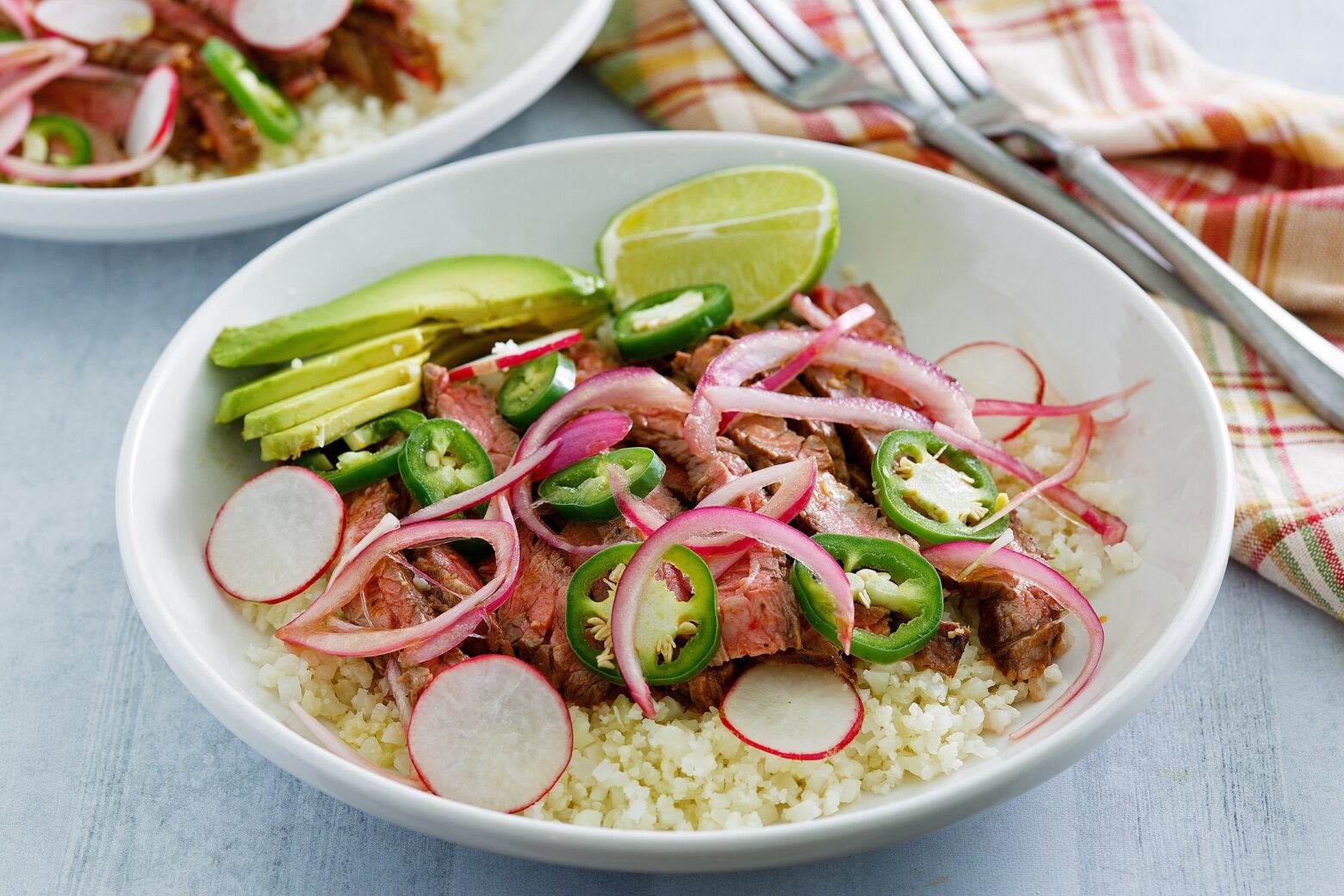Why You Should Opt for Grass-Fed Beef

A fan of The Paleo Diet lifestyle recently sent our team the following question:
Where can I find research that will show how the properties of grain accumulate in the beef that we eat, that has been feed grains and soy? Or is it that the beef just has a lower omega 3 ratio? Does that make grass feed beef healthier to eat?
Grass- vs. grain-fed beef has been the subject of considerable debate in the Paleo community ever since the recent growth of the ancestral-based health movement1. Issues surrounding the debate have been centered on health ramifications, affordability, availability, and ethical and environmental concerns.
The grain-fed beef market is a relatively recent phenomenon. Prior to 1850 nearly all cattle raised for consumption in the United States were raised and slaughtered on open pastures, where grass was the primary staple. After the mid-19th century, advancements in agricultural technology resulted in massive corn yields, which in turn lead to huge surpluses. Ranchers quickly realized that feeding cattle a corn-based diet caused the animals to grow twice as fast (two years from birth to slaughter instead of four to five) and resulted in a significantly larger finishing weight due to a higher stored body fat content2. This modern livestock process is directly responsible for the heavily marbled meat one can frequently observe while strolling the supermarket aisles today.
This widespread implementation of grain-fed, profit-oriented, livestock production is actually a very recent phenomenon when one considers that its use represents a tiny fraction of human evolution (less than 200 years of grain-fed cattle production vs. the earliest evidence for anatomical modern day Homo sapiens, approximately 200,000 years ago2,3.
The strong economic incentives granted by rapidly churning out grain-fed, factory-produced cattle has resulted in millions of very sick animals, stuck in inhumane and crowded living conditions. Thus, these animals require massive amounts of antibiotics just to stay alive. Prior to factory livestock production, ranchers would cull the sick animals and only the strongest and healthiest would survive. By the time these grain-fed cattle reach the slaughterhouse, they cannot come close to rivaling the health of pasture-raised cattle.
Which would you rather eat? A sick, dying, corn-fed cow that has been sustained on antibiotics or one that was free to roam in a pasture as evolution and nature intended? As the old saying goes “you are what you eat.”
But let’s put aside the history and cruel living conditions of factory-raised/grain-fed cattle and simply look at the nutritional differences between grain and grass fed beef. Perhaps the biggest difference lies within the omega-3 to omega-6 fatty acid content. On average, grass fed beef contains 191.6 mg of omega-6 fatty acids per 100 grams of muscle tissue and 97.6 mg of omega-3 fatty acids per 100 grams of muscle tissue. Whereas, grain fed beef contains approximately 253.8 mg of omega-6 fatty acids per 100 grams of muscle tissue and 63.3 mg of omega-3 fatty acids per 100 grams of muscle tissue4. Additionally, grass-fed beef has been shown to contain significantly higher levels of conjugated linoleic acid (CLA), a naturally occurring healthful fat. Some studies have recognized CLA for both its anti-cancer and anti-carcinogenic effects. Additionally, cattle raised on grass have elevated precursors for Vitamin A, E, and glutathione (all cancer-fighting antioxidants)5.
I am unaware of any evidence supporting the bioaccumulation of grain proteins within the tissue of grain fed beef or of any biological mechanism that would allow for this to happen in cattle. That being said, a recent study showed that poultry fed a soy-rich feed demonstrated a significant increase in soy-derived isoflavones (potent phytoestrogens) in both hen tissue and eggs6. Soy-derived isoflavones are often responsible for the allergic reactions that some people experience from egg consumption, and thus is a great reason to opt for “soy-free” pasture-raised eggs. Perhaps similar studies demonstrating the accumulation of certain grain properties in the tissue of cattle will be available in the near future.
As a final note, it is important to discuss the relevance of grain- and corn-fed beef to the environment. At the root of the problem is corn. It is the most heavily subsidized crop on American soil and for good reason7. It is cheap, hardy, easy to grow and can feed large populations of both humans and animals directly and indirectly. The extreme reliance on industrially produced corn for livestock production and food supply has damaged our soil, water (eutrophication), air, and ultimately our bodies8,9,10,11. To the contrary, grass-fed beef operations tend to work in harmony with nature and facilitate the healthy cycling of nitrogen through grass-dominated ecosystems12. Cattle and other ungulates have shared this reciprocal relationship with grasslands all over the world for millions of years. If it makes sense for humans to eat an ancestral diet, then it should also make sense for our livestock to follow suit.
If you are having trouble finding grass-fed beef and other pasture raised animal products in your location, check out www.eatwild.com.
References
[1] Schwartz, D. B., & Stapell, H. M. (2013). Modern Cavemen? Stereotypes and Reality of the Ancestral Health Movement. Journal of Evolution and Health, 1(1), 3.
[2] Cordain, L. (n.d.). Grass-Fed Beef in the Human Diet: II. Applications to Clinical Disease. Retrieved February 23, 2016.
[3] Bradshaw, J. L. (1997). Human evolution: A neuropsychological perspective, p. 185.
[4] Ponnampalam, E. N., Mann, N. J., & Sinclair, A. J. (2006). Effect of feeding systems on omega-3 fatty acids, conjugated linoleic acid and trans fatty acids in Australian beef cuts: potential impact on human health. Asia Pacific Journal of Clinical Nutrition, 15(1), 21.
[5] Daley, C. A., Abbott, A., Doyle, P. S., Nader, G. A., & Larson, S. (2010). A review of fatty acid profiles and antioxidant content in grass-fed and grain-fed beef.Nutrition Journal Nutr J,9(1), 10.
[6] Galdos, D. M. M. V. (2009). Quantification of Soy Isoflavones in commercial eggs and their transfer from poultry feed into eggs and tissues(Doctoral dissertation, The Ohio State University).
[7] Woolf, A. (2007). King Corn. Perf. Ian Cheney and Curt Ellis. Mosaic Films.
[8] Bourgeois, L. (2012). A Discounted Threat: Environmental Impacts of the Livestock Industry. Earth Common Journal, 2(1).[9] Durning, A. B., & Brough, H. B. (1991). Taking stock: animal farming and the environment.
[10] Fiut, I. S., & Urbaniak, M. (2016). Factory Farming Versus Environment and Society. The Analysis of Selected Problems. PROBLEMY EKOROZWOJU,12(1), 143-156.
[11] Horrigan, L., Lawrence, R. S., & Walker, P. (2002). How sustainable agriculture can address the environmental and human health harms of industrial agriculture. Environmental health perspectives, 110(5), 445.
[12] 12. Frank, D. A., Groffman, P. M., Evans, R. D., & Tracy, B. F. (2000). Ungulate stimulation of nitrogen cycling and retention in Yellowstone Park grasslands.Oecologia, 123(1), 116-121
Kyle Cordain
Kyle Cordain is a graduate of Colorado State University with a major in Anthropology and a minor in Global Environmental Sustainability.
More About The Author




